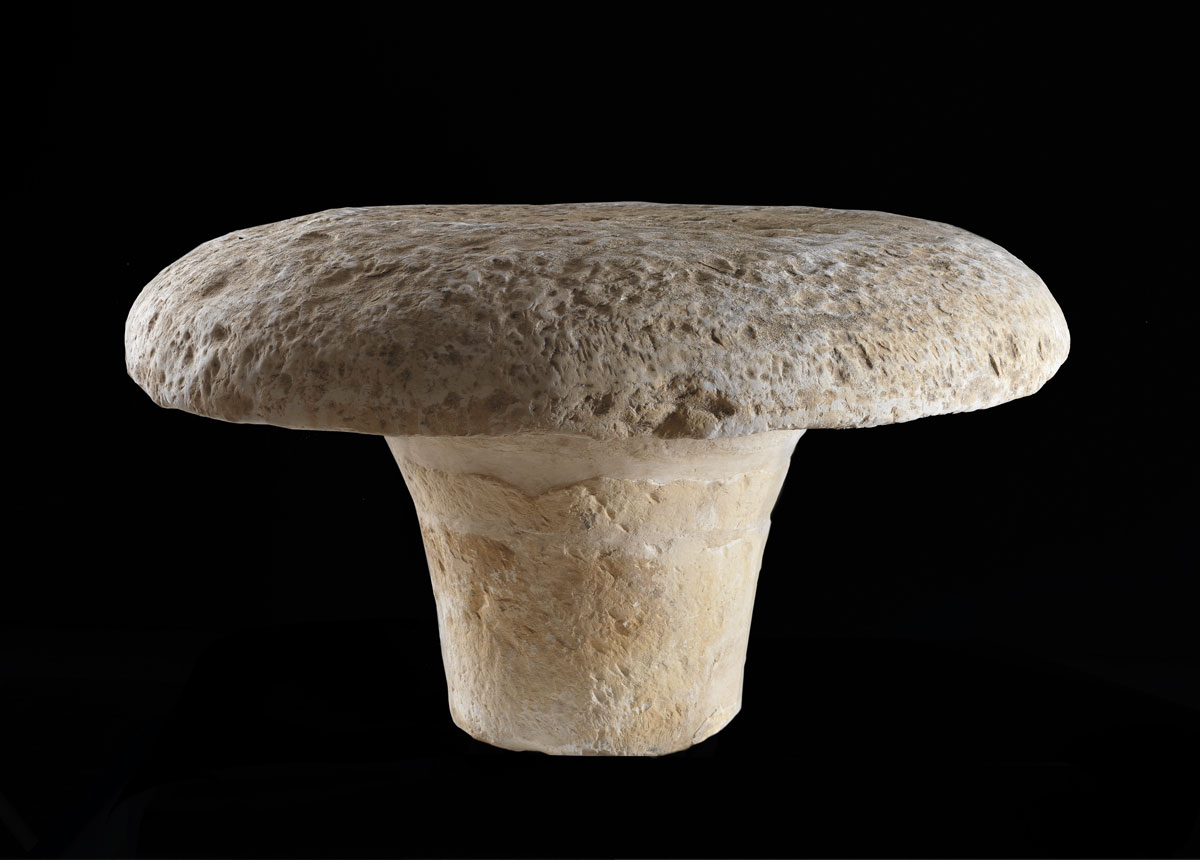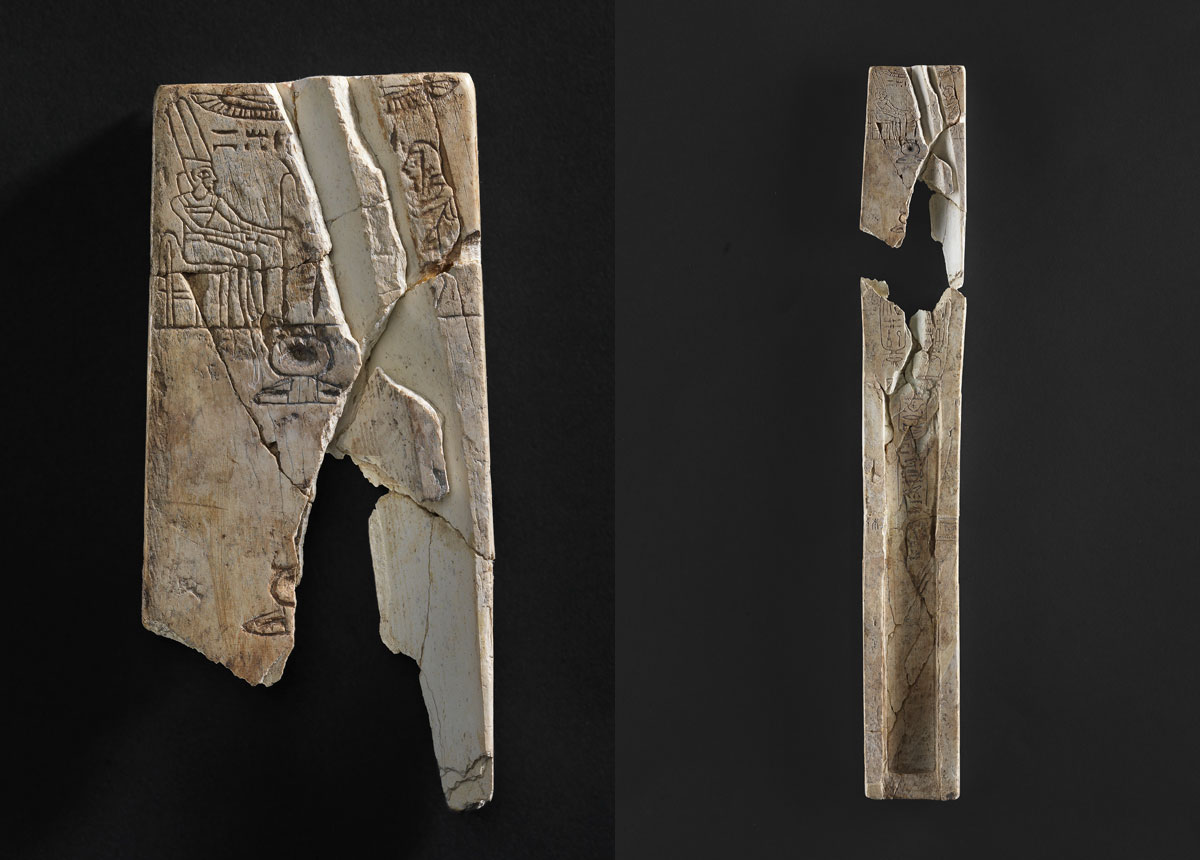Reconstructed gate to the residence of the Egyptian governor
Beth Shean, 1185–1153, limestone
Israel Antiquities Authority
This reconstruction includes a partially preserved
lintel, doorjamb, and cornices. The lintel depicts a
kneeling worshiper facing columns of hieroglyphs
that present the names of Ramesses III, words of
adoration of the king, and the name and titles of the
worshiper – Ramesses-user-khepesh, the Egyptian
governor at Beth Shean. Words of praise for the king
appear also on the doorjamb. Scenes of adoration of
and words of praise for the Egyptian king are well
attested in Egyptian private architecture, suggesting
that these architectural elements belonged to the
residence of the Egyptian governor at Beth Shean.










